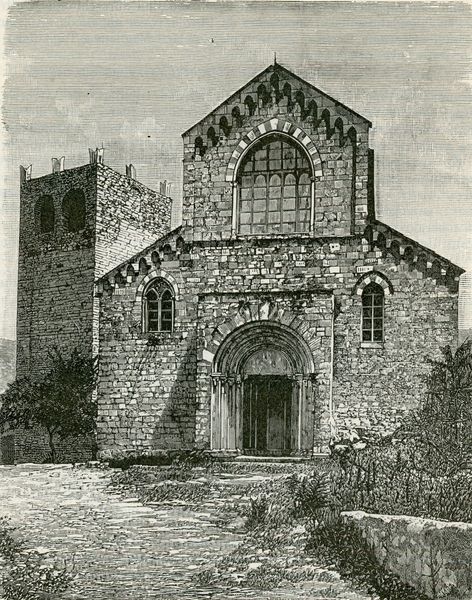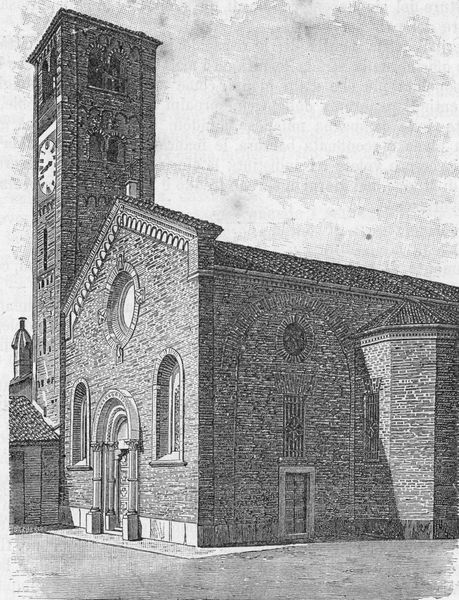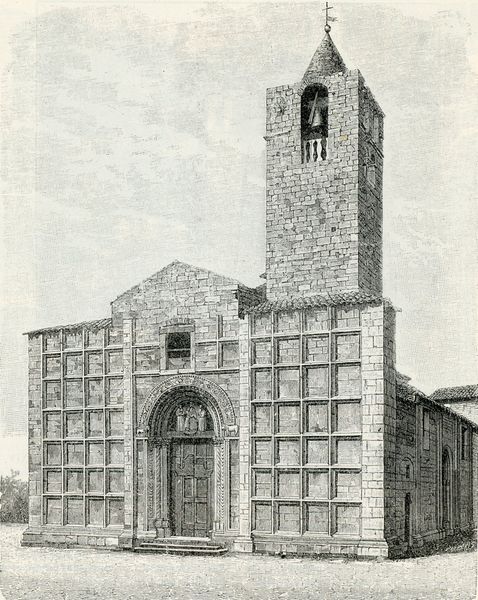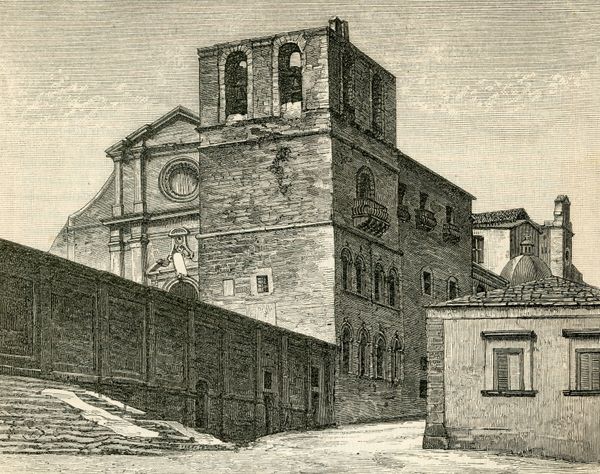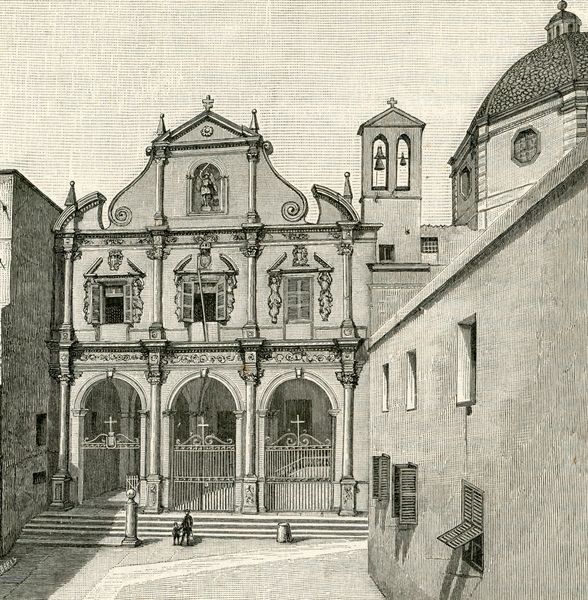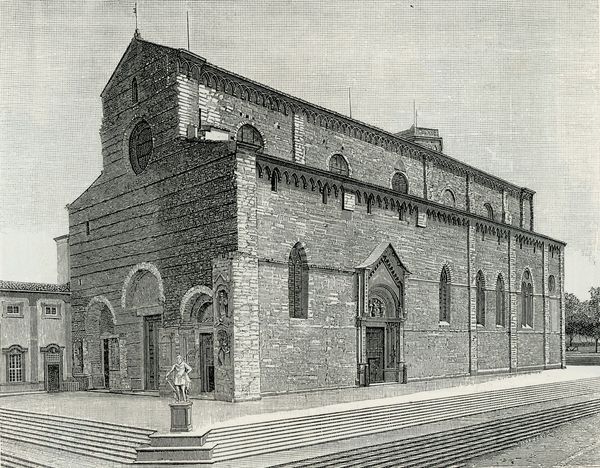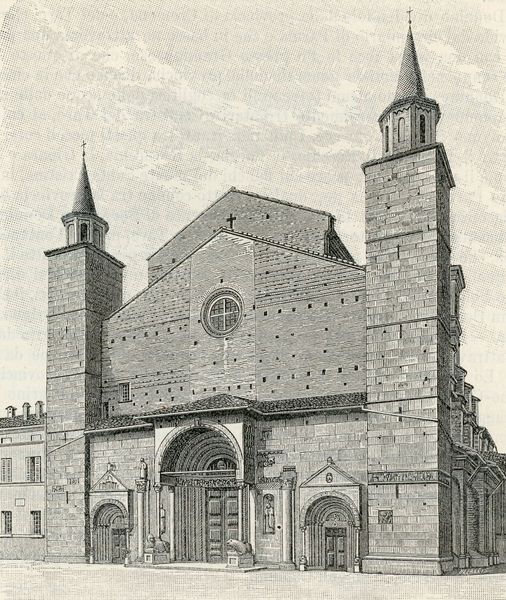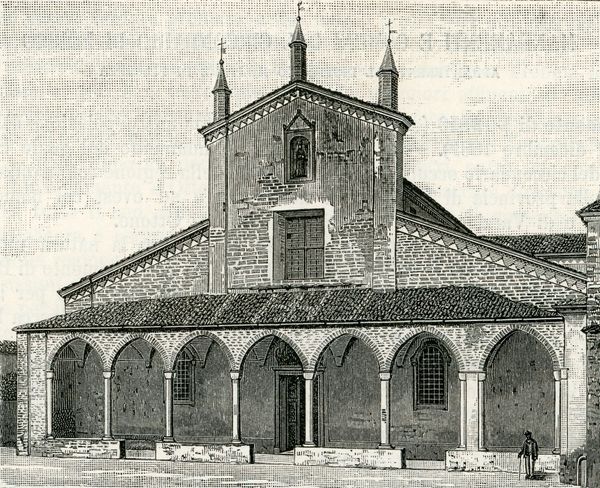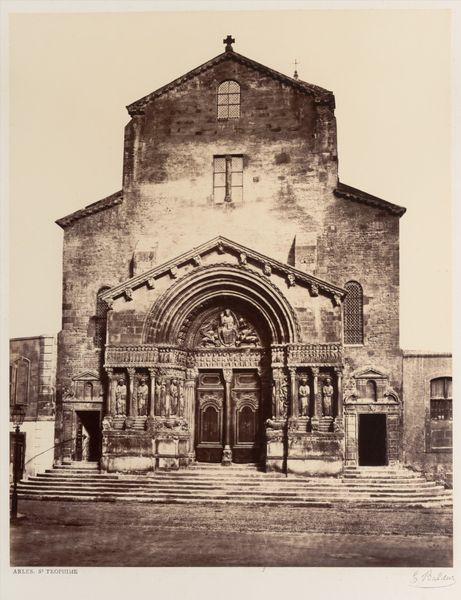
Copyright: Public domain
Curator: This is "Rosa, Cupola E Campanile Della Cattedrale" a pen and ink drawing completed in 1898 by Giuseppe Barberis. Editor: There's a haunting elegance here, don’t you think? It captures a sense of timelessness despite its specific architectural details. It also looks a little claustrophobic due to how dense it is. Curator: It's remarkable how Barberis translated the substantial mass of a cathedral into something so delicate. Considering the time and materials involved, this type of architectural drawing would have been a valuable commodity showcasing skill, precision, and the artistic capabilities associated with craftsmanship. Editor: The cathedral's tower seems to reach towards something divine. It’s interesting how religious architecture uses height as a symbol, lifting our gaze, inspiring awe and directing our thoughts upwards. What are some specific stylistic and architectural elements Barberis highlights here? Curator: The meticulous rendering of the stone facade is striking. He seems fixated on the repetition of brick. Each stone, each window arch meticulously drawn, emphasizes the immense labor involved in constructing such a building. The contrast between the dark, densely drawn areas and the open spaces directs your eyes strategically around the image. Editor: Notice the large rose window prominently placed on the facade. Traditionally, the rose window represents Divine Love and also echoes the image of a mandala which is a symbol for spiritual journeys and completeness. Here it acts like an all-seeing eye, silently watching over the town. Curator: And it must be stated that while there is fine detail, there’s also a starkness to the drawing. It is more an engineer’s rendering with romantic undertones and artistic flair which makes it more interesting in context of what it's not doing as fine art, and what labor this intends to showcase. Editor: It creates a curious emotional duality between faith and structural solidity. This pen drawing makes it a little bleak for the traditional associations we have. A testament to how architectural works, whether physically manifested in stone or portrayed through illustrations, can be repositories of cultural symbols and profound emotional impact. Curator: A valuable demonstration of how craft intersects with representation and societal values, then and now. Editor: Agreed. I appreciate the new light it’s shed on traditional symbolism.
Comments
No comments
Be the first to comment and join the conversation on the ultimate creative platform.
